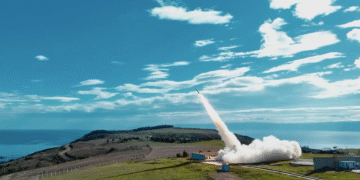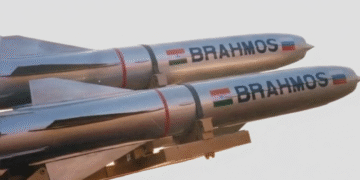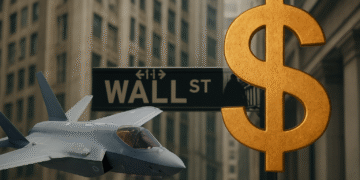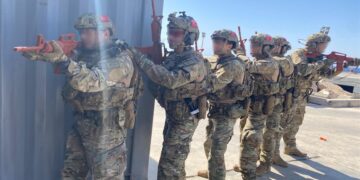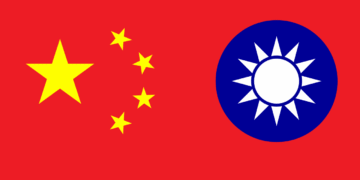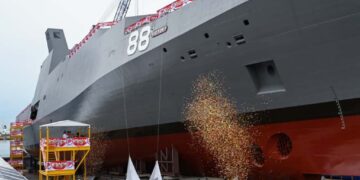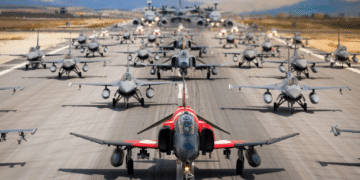U.S. President Donald Trump, during his first Asian tour of his second term, while coming together with old rivals, new friends, and potential opponents, is expected to rely on the power of face-to-face diplomacy as he aims to make agreements that could have comprehensive economic and national security implications. However, Trump’s fondness for customs tariffs, just like his unpredictable approach toward foreign relations, has created uncertainty among once solid U.S. allies in the region and appears to have launched a major test in new trade and military cooperation projects. While President Trump positions himself as “a dealmaker and peace negotiator,” a cautious region seeks reductions in customs tariffs and more stable relations. Trump is especially trying to defend this role against China’s increasing global influence. 1 President Trump arrived in Malaysia for the start of his roughly week-long Asian tour and entered a diplomatic whirlwind that includes a peace agreement and deals concerning tariffs and critical minerals.2
It is observed that Trump’s Asia policy is facing intense pressure on countries’ trade policies and defense spending. As the U.S. sits at the table with its allies, the strategic question “Whose side is the U.S. on, and what is it defending?” is expected to come to the forefront. Indeed, during his trip to an Asia shaken by trade policies, the U.S. President will test his ability to make deals. His meeting with Chinese President Xi Jinping is the focal point of the visit program. As is known, Washington and Beijing have increased tariffs on each other’s exports and have threatened to halt trade in critical minerals and technologies.3 During the trip, he will participate in high-risk trade talks with Chinese leader Xi Jinping. Trump, hoping to reach an agreement that will end the tough trade war between the world’s two largest economies, will meet Xi on the final day of his trip.Regarding North Korea’s demand for recognition as a nuclear state as a precondition for dialogue with Washington, Trump responded, “I think they are some kind of nuclear power.” Although there are multiple actors in the global trade dance, the key to Trump’s success or failure is China. Trump’s planned meeting with Chinese leader Xi Jinping within the framework of APEC (the first meeting since 2019) may determine the course of U.S.-China relations in Trump’s second term. 4 As the U.S. President himself has admitted, the strict customs tariffs imposed on Chinese imports are unsustainable. Although he does not say it openly, an escalating economic war with America’s largest trading partner would have devastating consequences for the U.S., China, and the rest of the world. When Chinese leader Xi Jinping meets with Trump on October 30, he may wish to be a tougher negotiator. That is why China uses its dominance over rare earth elements—the minerals used to produce semiconductors, weapons systems, cars, and even smartphones. This is a weakness for the U.S., and China is taking advantage of it, just as it did when it harmed American farmers and Trump’s rural voter base by not purchasing soybeans.5
Ceasefire at the First Stop, Arms Deals with Japan at the Second
U.S. President Donald Trump presided over what he described as a “historic” peace agreement between Thailand and Cambodia, which have long been engaged in a border dispute. Trump’s trade pressure brought a ceasefire to the agenda that ended five days of clashes in late July that resulted in the deaths of more than two dozen people. Under Trump’s mediation, Cambodia and Thailand signed an agreement to extend the ceasefire.6 The agreement included Thailand’s release of 18 detained Cambodian soldiers and the initiation of the removal of heavy weapons from the border area by both sides. The agreement built upon the ceasefire reached after Trump had called the leaders of both countries three months earlier, urging them to end hostilities or risk the suspension of trade talks with Washington.
Next on Trump’s agenda is hosting the royal family in Tokyo.7 Japan’s first female Prime Minister, Takaichi, stated in her first phone call with Trump that strengthening the alliance between their countries was “the highest priority.” Japan hosts the largest U.S. military force overseas, and Trump is expected to sign new arms sales agreements with Japan to help defend its islands against China.8
U.S. negotiators claimed that the meeting created a “successful framework” ahead of the talks expected to take place in South Korea between Trump and Chinese President Xi. Trump stated, “I think we will reach an agreement with China,” while Beijing’s chief trade negotiator, Li Chenggang, said that “a preliminary consensus” had been reached after “very intense consultations.”9 However, all eyes are already on the expected meeting with Xi in South Korea and whether or not it will take place. A possible meeting with North Korean leader Kim Jong Un, who had a famous handshake with Trump in the demilitarized zone of the Korean Peninsula in 2019, is also on Trump’s agenda. 10 Kim has achieved steady improvements in North Korea’s ballistic missile program, sent more than 10,000 troops to fight alongside Russian forces in the war in Ukraine, and joined a loose anti-Western alliance with Beijing and Moscow. However, the most important stop on the travel schedule is expected to be the APEC summit in South Korea at the end of the month, where he will meet Chinese leader Xi Jinping to discuss trade and possibly the Taiwan issue.11


